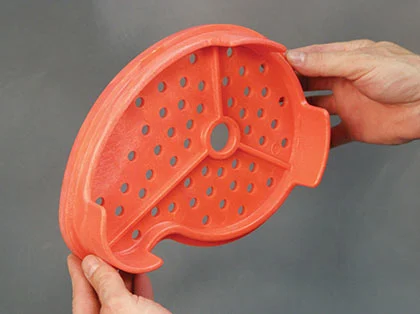How to Keep Your Sump Pump Running Efficiently?
Welcome to our comprehensive guide on keeping your sump pump running efficiently. A properly functioning sump pump is crucial for protecting your basement from water damage during heavy rains or flooding. In this article, we will share valuable tips and tricks to ensure your sump pump operates at its best, keeping your home safe and dry.
Regular Maintenance
Regular maintenance is key to ensuring the efficiency and reliability of your sump pump. Follow these steps to keep it in top condition:
- Cleaning the sump pit: Over time, debris, dirt, and sediment can accumulate in the sump pit, hindering the pump’s performance. Regularly clean the sump pump pit by removing any build-up. Ensure that the pit is clear and free from any obstructions.
- Testing the float switch: The float switch is responsible for activating the pump when the water level rises. Lift the float switch to check if the pump activates properly. If it doesn’t, it may need adjustment or replacement.
- Inspecting the check valve: The check valve ensures that water flows in one direction, preventing backflow. Periodically inspect the check valve to ensure it is functioning correctly. If you notice any leaks or issues, it may need repair or replacement.
- Verifying the power source: Ensure that the sump pump is connected to a reliable power source. Consider installing a battery backup system to protect against power outages. This way, your sump pump will continue operating even during electrical failures.
Maintain Proper Drainage
Proper drainage is essential for efficient sump pump operation. Follow these guidelines to maintain good drainage around your home:
- Clearing gutters and downspouts: Regularly clean and maintain your gutters and downspouts to prevent clogs. Leaves, debris, and other materials can block the flow of water, causing overflow near the foundation. Clean gutters will ensure water flows away from your home.
- Extending downspouts: Direct your downspouts at least 10 feet away from your foundation to prevent water from pooling near the basement walls. This will minimize the amount of water that enters the sump pit and reduce the workload on the Sump Pump.
- Grading the landscape: Ensure the ground around your home slopes away from the foundation. Proper grading allows water to flow away naturally, preventing water from pooling near the basement walls.
Install a Sump Pump Cover
Consider installing a sump pump cover to protect it from debris, dirt, and accidental damage. A cover will also help reduce odors and prevent children or pets from tampering with the pump. Make sure the cover is easily removable for maintenance and inspection purposes.
Bestselling Sump Pumps

Backup Power Source
During power outages, your sump pump becomes ineffective, leaving your basement vulnerable to flooding. Install a battery backup system or consider a water-powered backup pump to ensure continuous protection. These backup options will activate if the primary power source fails, keeping your sump pump operational.
Bestselling Battery Backups for Sump Pumps
Test Your Sump Pump
Regularly test your sump pump to ensure it is functioning properly. Follow these steps:
- Fill the sump pit with water: Pour enough water into the sump pit to raise the water level. Observe if the pump activates and efficiently removes the water. This test confirms that the pump is operating correctly.
- Check the discharge pipe: Inspect the discharge pipe to ensure that water is being properly expelled away from your home. Ensure that the pipe is not clogged or obstructed, as this can affect the pump’s efficiency.
- Testing every few months: It is recommended to test your sump pump every few months to ensure its reliability. Regular testing will give you peace of mind, knowing that your pump is ready for any water-related challenges.
Be Alert for Warning Signs
Stay vigilant for any warning signs that your sump pump may be malfunctioning. Promptly addressing issues can prevent basement flooding. Here are some warning signs to watch out for:
- Unusual noises: If your sump pump is making unusual sounds such as grinding, clunking, or screeching, it could indicate mechanical issues. Contact a professional to diagnose and resolve the problem.
- Excessive cycling: If your sump pump turns on and off too frequently, it may be a sign of incorrect sizing, a malfunctioning switch, or a high water table. Have a professional assess the situation and make any necessary adjustments.
- Failure to activate: If your sump pump fails to activate during heavy rainfall or flooding, it could be due to power failures, switch malfunctions, or motor issues. Immediate attention is required to avoid potential water damage.
Conclusion
Keeping your sump pump running efficiently is crucial for protecting your basement from water damage. By following the tips and tricks outlined in this article, you can ensure your sump pump operates at its best, providing you with peace of mind during heavy rains or flooding situations. Remember, regular maintenance, proper drainage, and backup power sources are key elements in maintaining an efficient sump pump system. Stay proactive and take the necessary steps to keep your home dry and safe.




